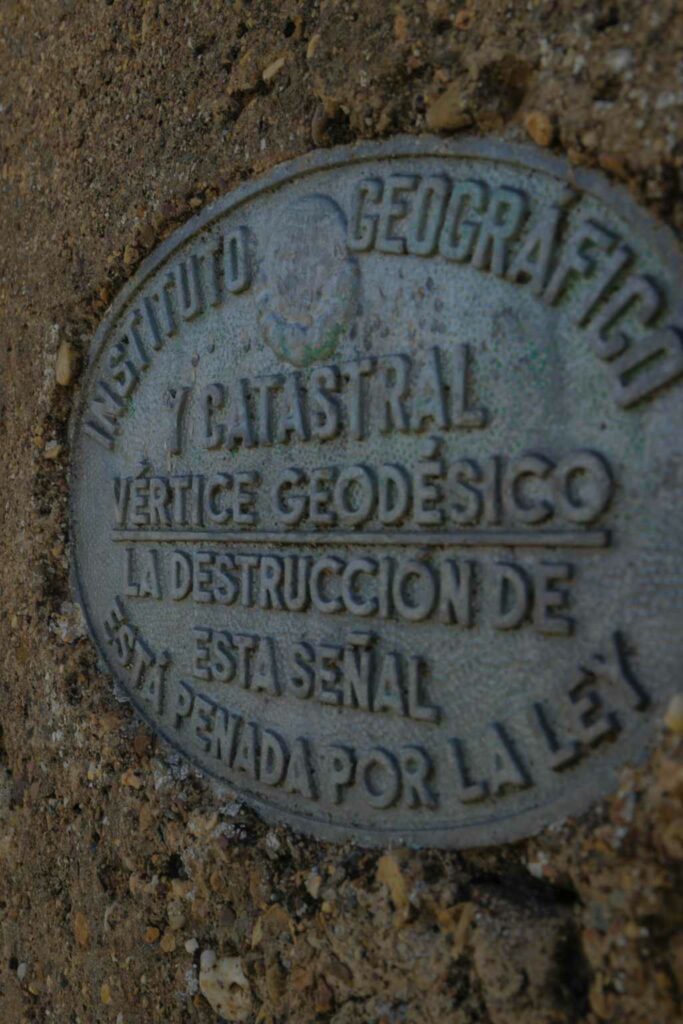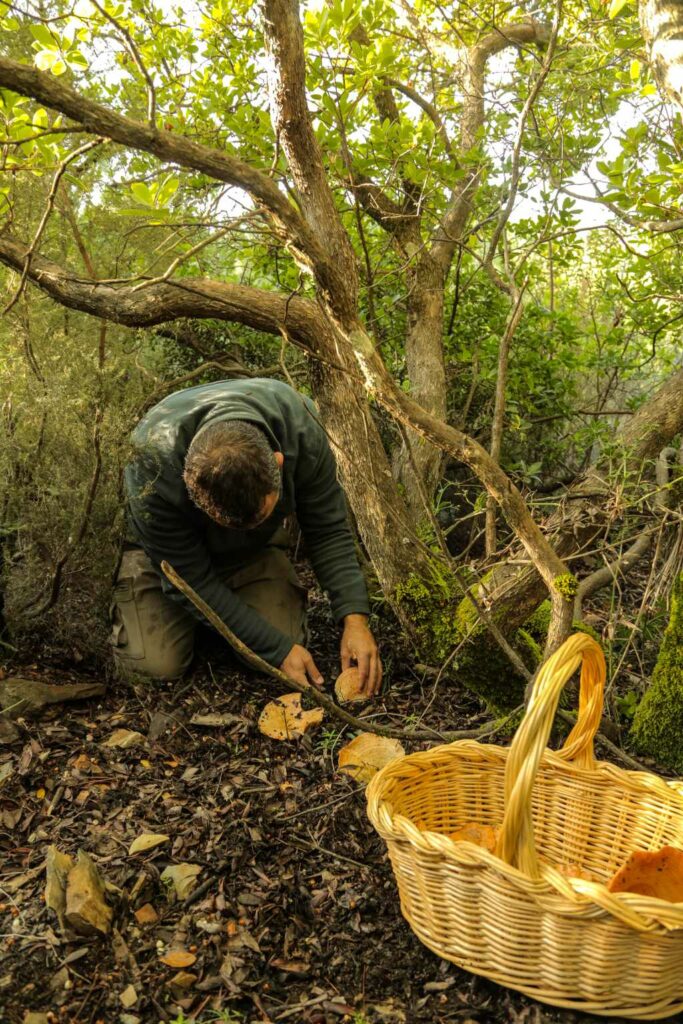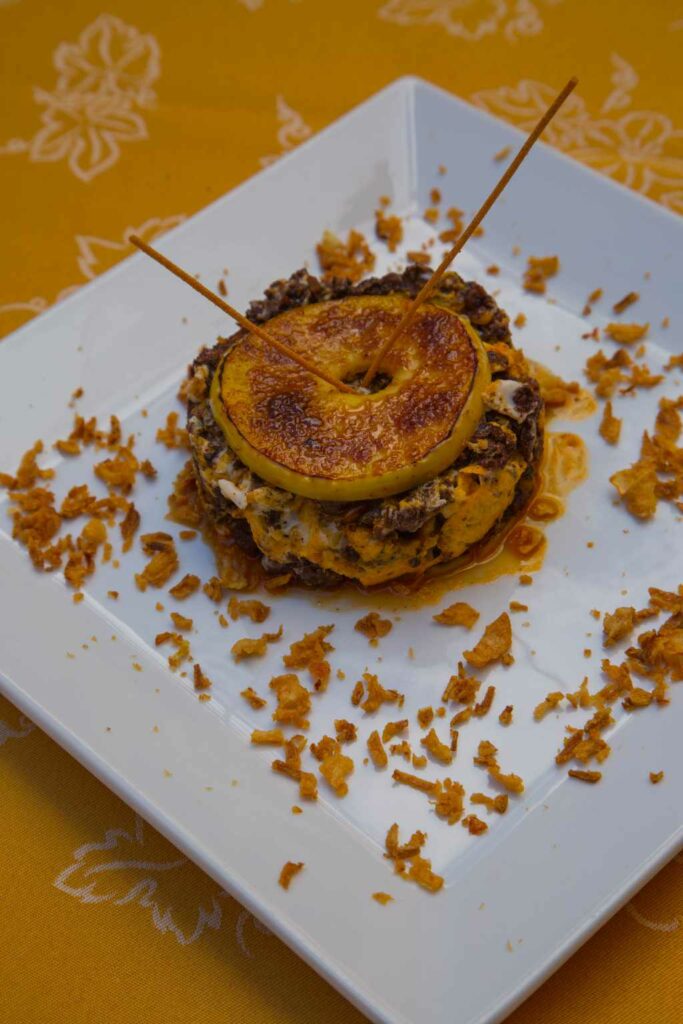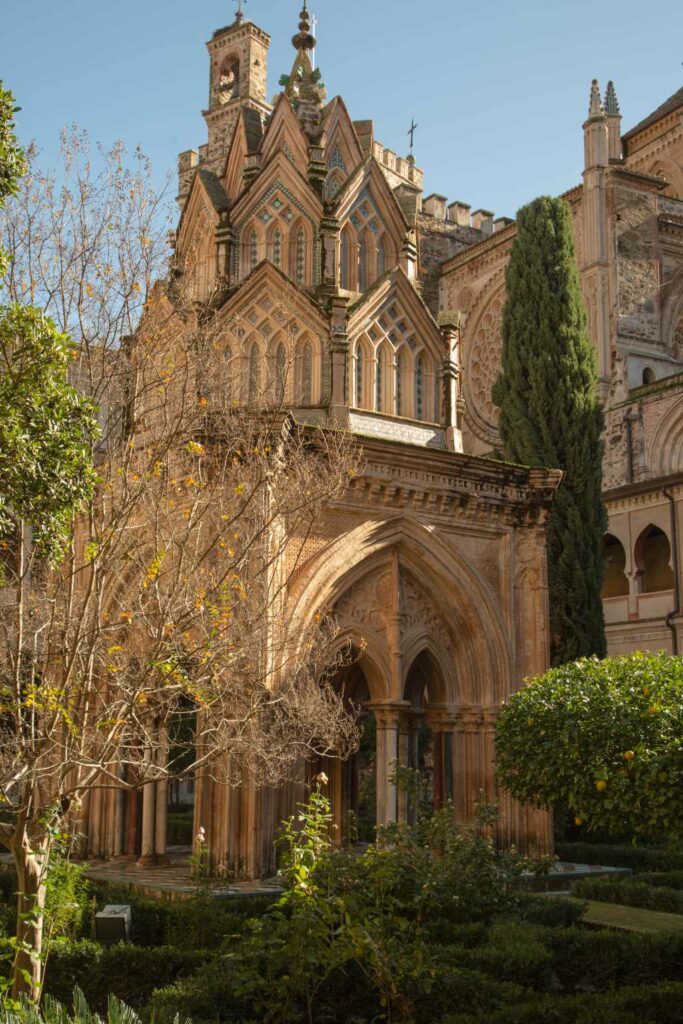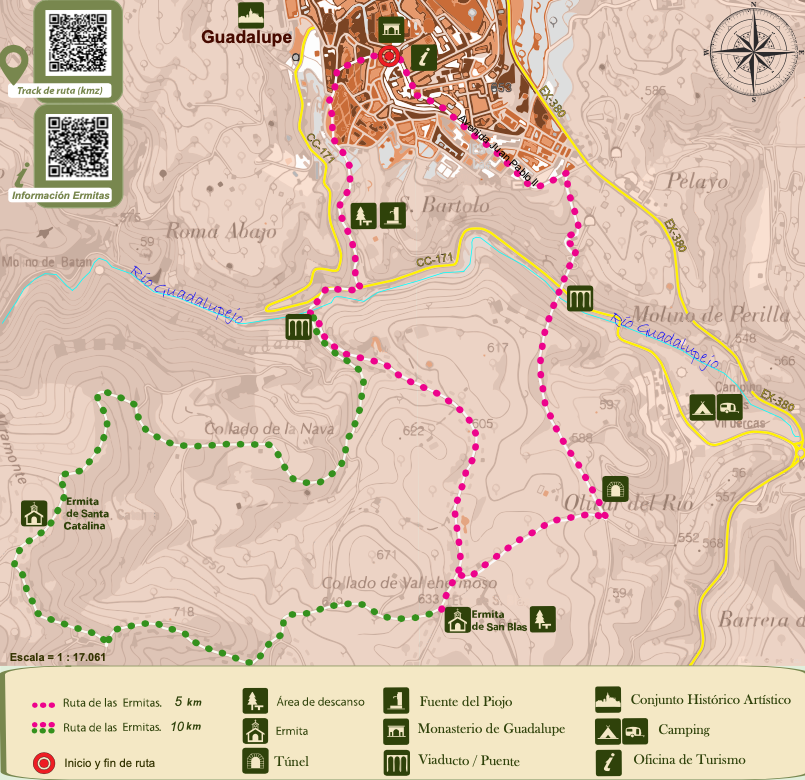
We will start the route from the Plaza de Sta. María de Guadalupe in the direction of Calle Gregorio López.
We will continue along Calle Poeta Angel Marina and Avda. Juan Pablo II. At its end we will find a dirt road on the right, where we will begin the descent towards the viaduct, a bridge built in the middle of the 20th century as part of the railway works. These were never completed and the road was never used. It is currently part of the Vía Verde Vegas del Guadiana program; project whose section Don Benito-Logrosán is already finished, leaving the section of Alía passing through Guadalupe pending.
While we cross the bridge we observe a magnificent view towards Pico Villuercas and if we dare to look at its height we can see the Guadalupejo River, declared an ecological biodiversity corridor in 2003.
We will follow the route of the old railway, seeing around us olive groves and vineyards, from which the locals obtain oil and pitarra wine.(owes its name to the clay vessel that has been used since ancient times for their fermentation and storage. It is a domestic production wine, very common in the province of Cáceres.)
We will arrive at the Puente de Palomo and after passing under it we will leave this flat route to start the ascent, now between fields of chestnut and olive trees, towards the Hermitage of San Blas, a Gothic-style oratory, built in the 15th century and restored in 1945. This saint is the patron saint of throat diseases and on February 3 a pilgrimage is celebrated to this place, where a mass and procession is celebrated around the hermitage; then locals and visitors enjoy a field day, tasting traditional food and outdoor games.
The route continues to the right of the hermitage along the Vallehermoso path. We will observe how the chestnut trees alternate with pines and the brambles with the rockroses
We will arrive at the hermitage of Santa Catalina, a Gothic-style rural oratory, built in the 16th century by order of Prior Jerónimo Fray Juan de Siruela. It was named in 1967. Here we will join with the Cañamero path, called Isabel la Católica because it reached the recreational farm that she had a little further up and which is known as Granja de Mirabel.
Until a few years ago, a pilgrimage was held around the hermitage on November 25, but that tradition has now been lost.
‘From here there are magnificent views of Puebla and the lands that surround it. If we look at the northern part we can glimpse the Hermitage of Humilladero. Gothic-Mudejar construction, built in the 15th century during the priory of Father Yáñez. Here the redeemed captives and pilgrims knelt to venerate the Virgin of Guadalupe when they saw the Sanctuary for the first time. One of these captives was precisely Miguel de Cervantes, the immortal author of ‘El Quixote’, who went to Guadalupe to offer the shackles that the Turks put on him during his arrest in Oran.
We begin the descent between pine forests and arbutus to reach the Cafiamero bridge and after crossing it we will arrive at the CC-712 highway and about 20 meters to our right we will arrive at an asphalt road that will take us to Puebla Baja after passing through the Piojo fountain, which owes its name to the bathing that pilgrims and visitors did in other times before entering the town; the Cruz de la Ventilla and the Arco del Tinte, the old exterior entrance gate to the east.
